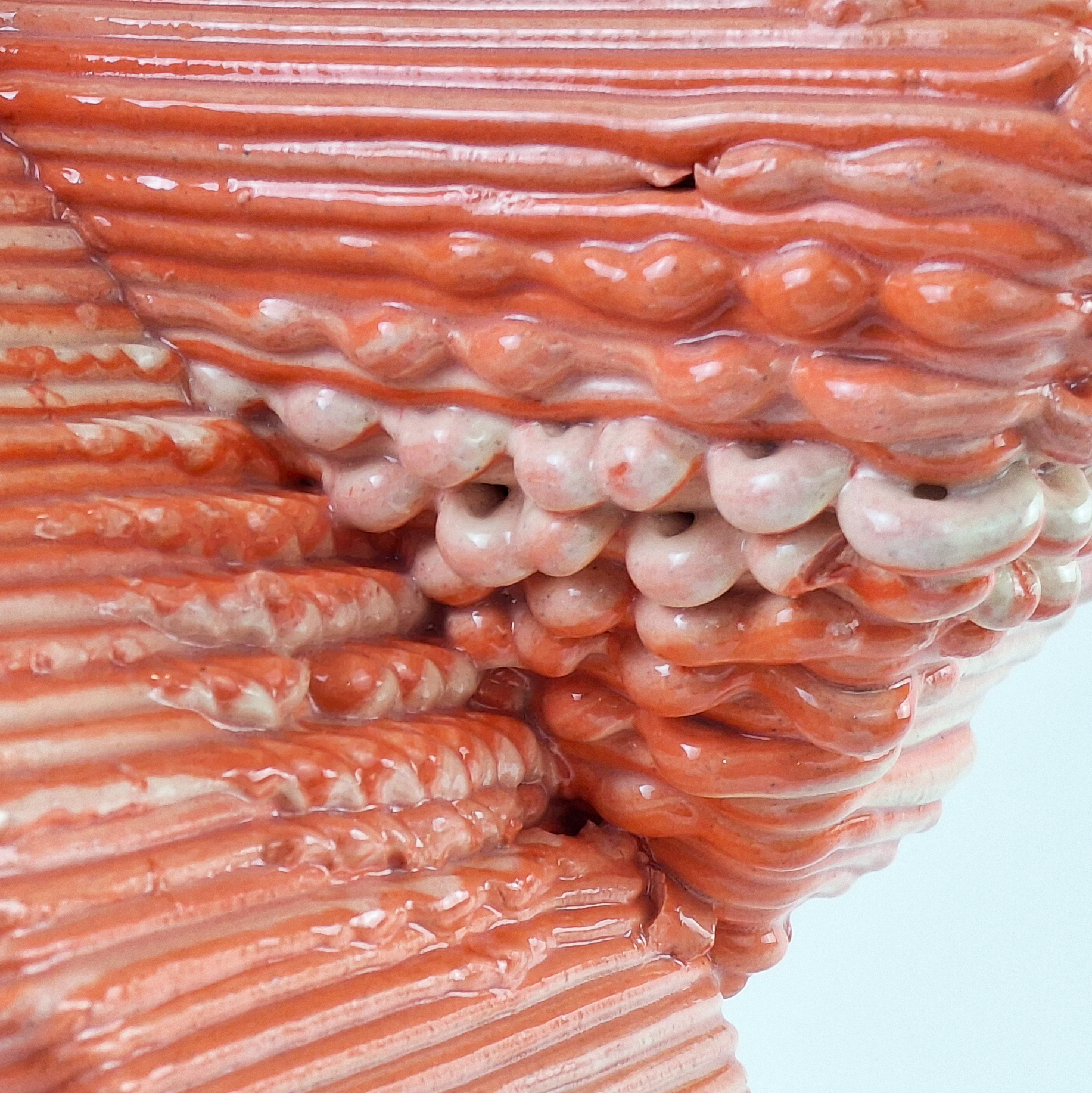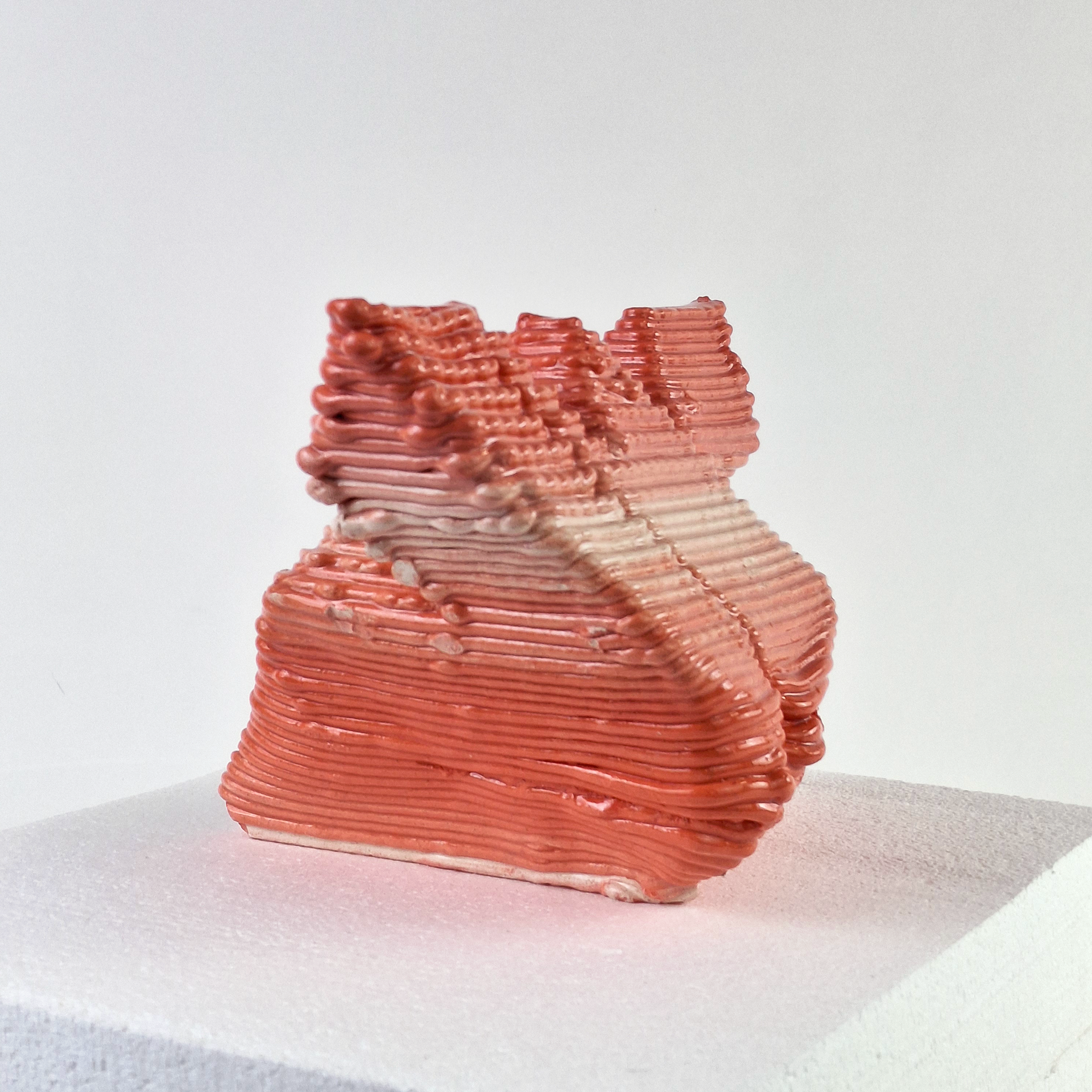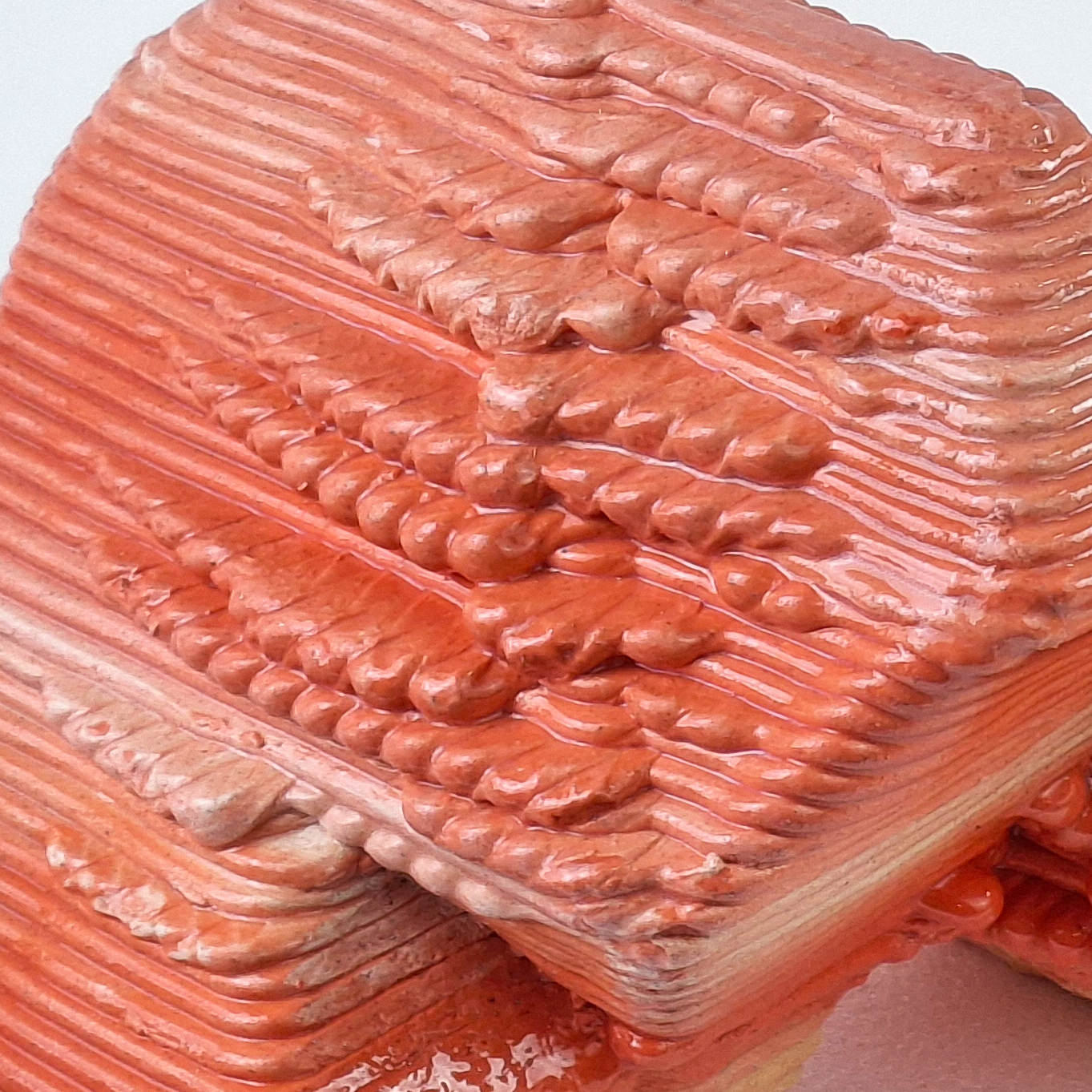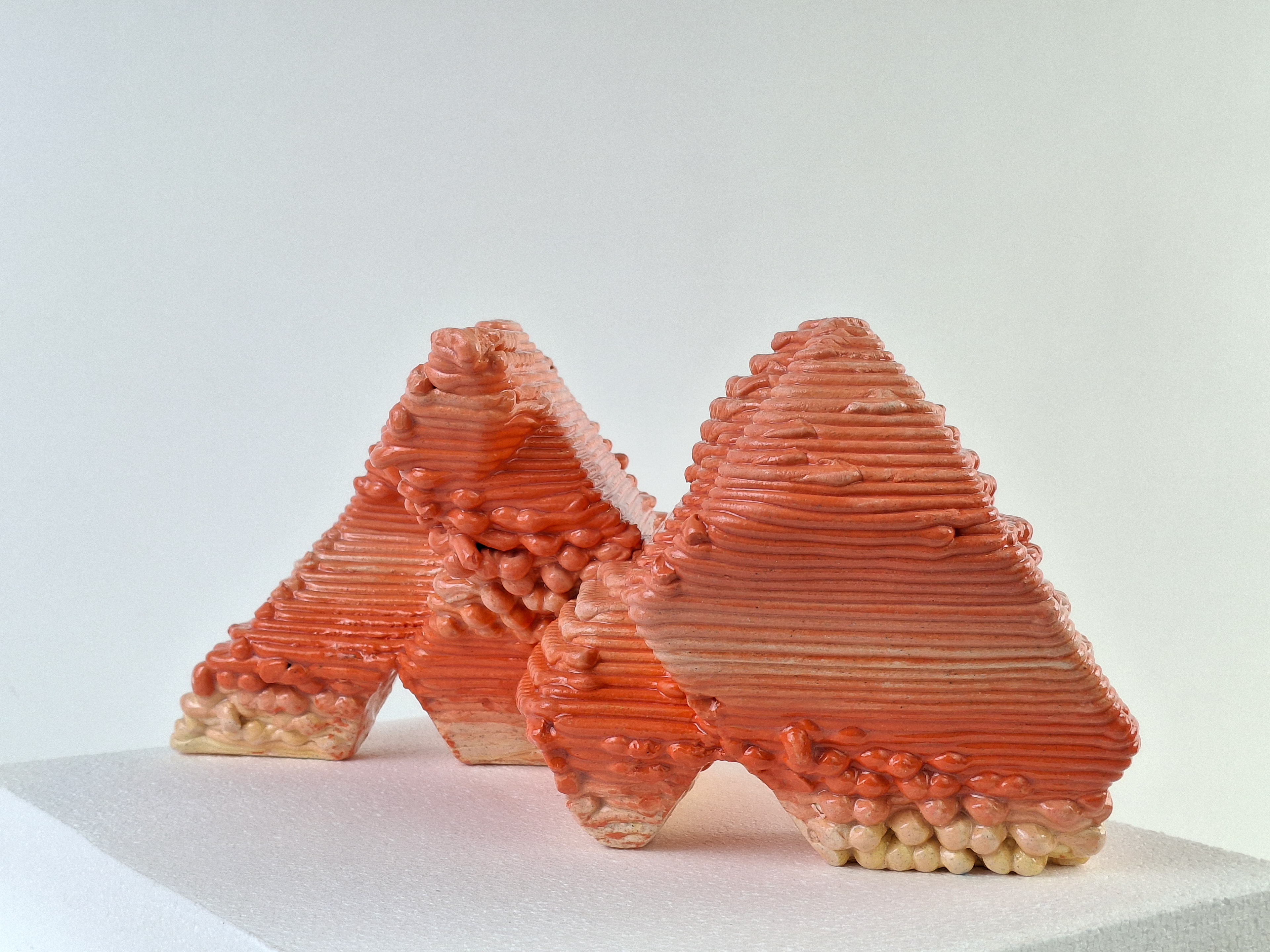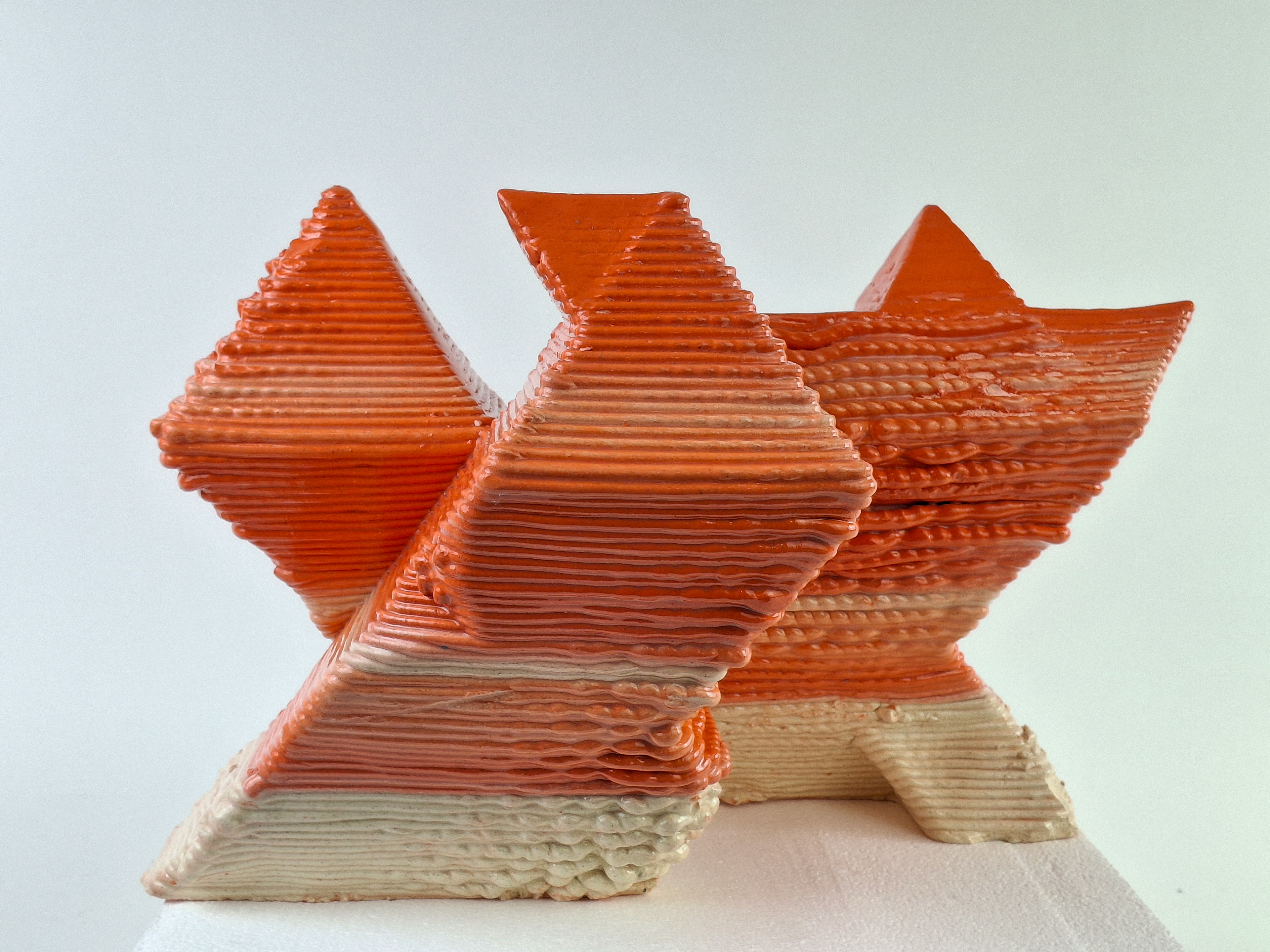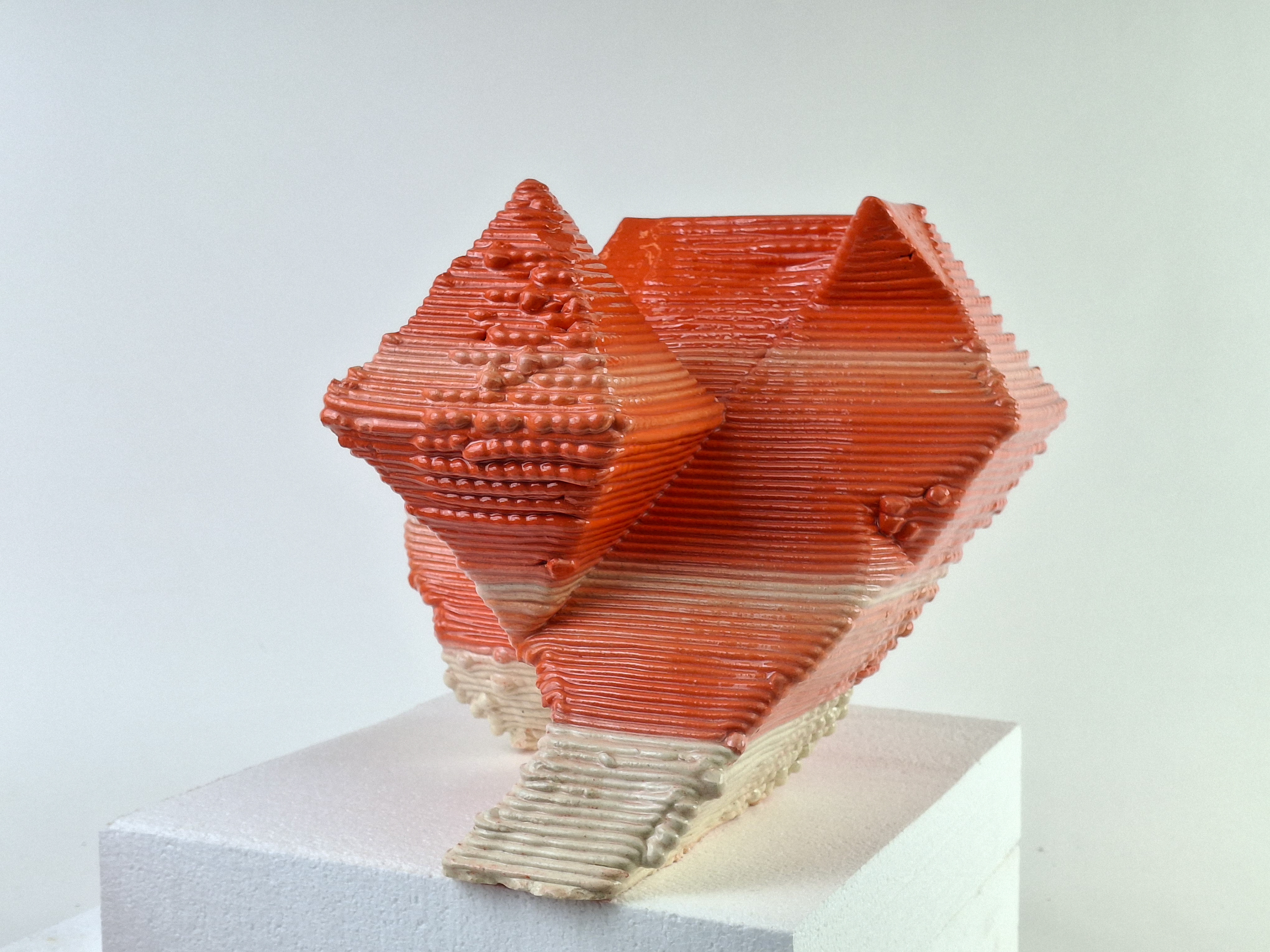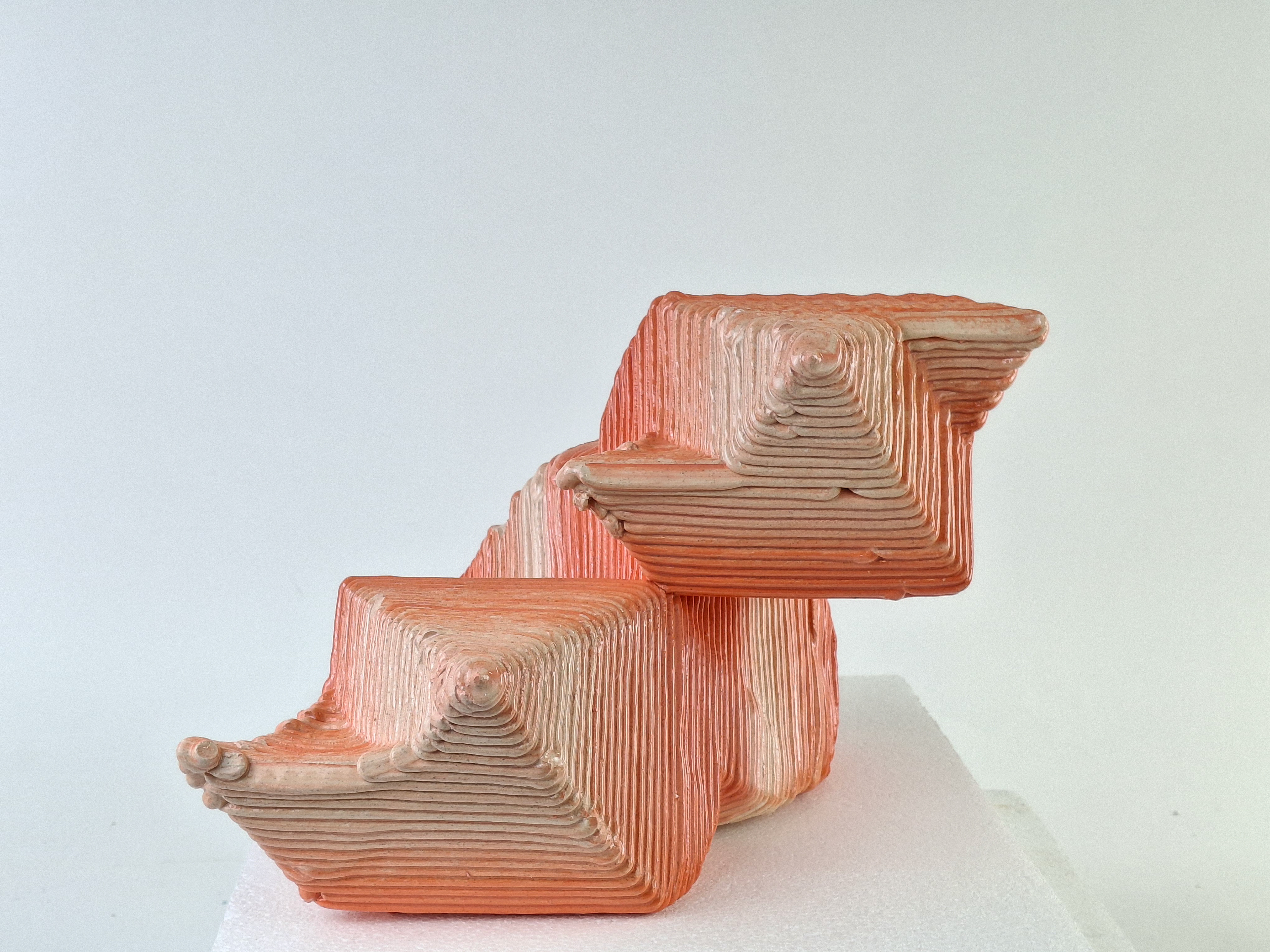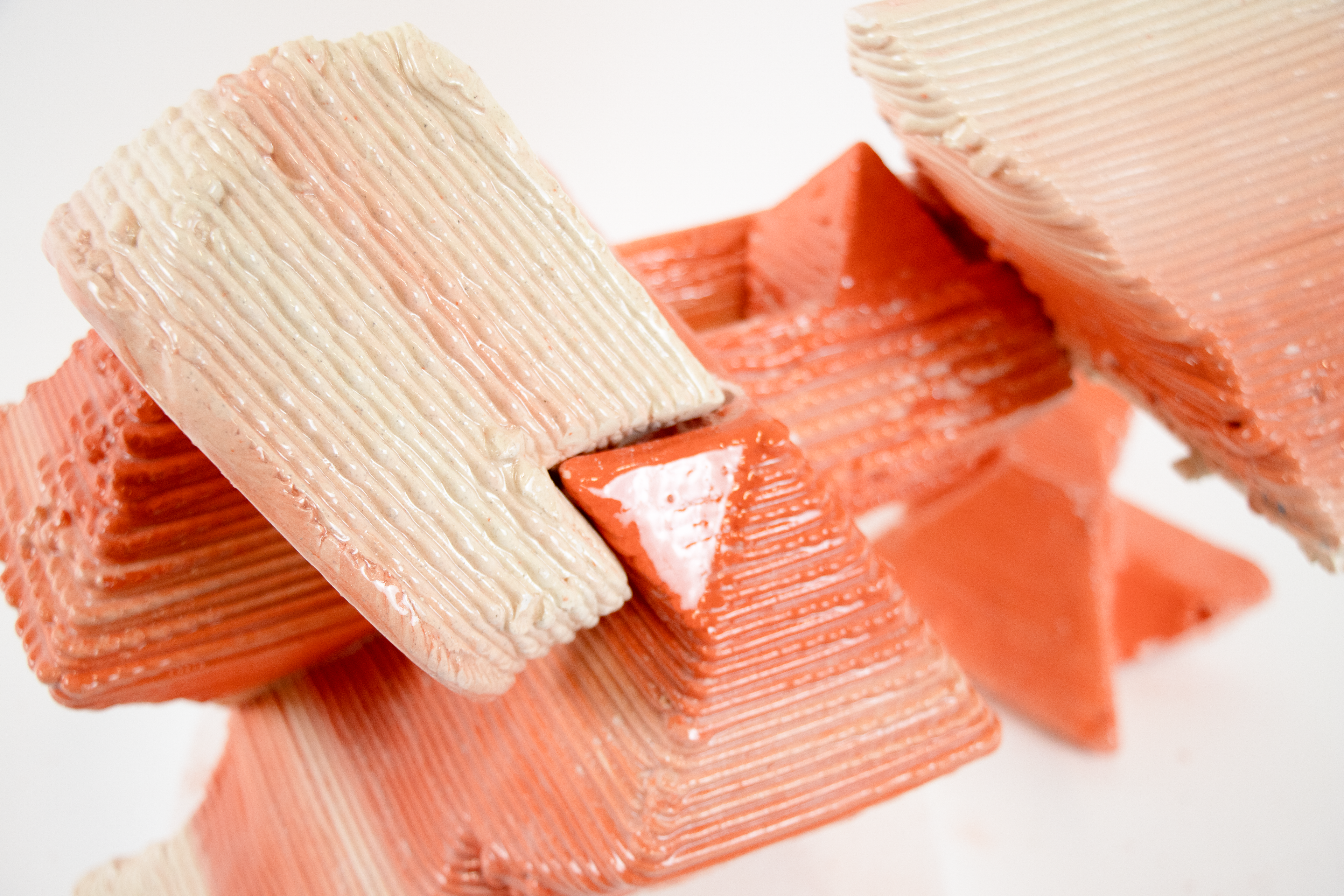MATERIAL: Clay
This project, part of an immersive studio on robotic use, explores the intersection of traditional ceramic fabrication and advanced robotic technology. Using a model of fused polyhedra, the project aims to restructure the original geometric form by introducing new curves and innovative interlocking systems to join the parts. The challenge is to take the rigid, angular polyhedral structure and reimagine it through the fluidity of curves, creating a more organic, interconnected assembly while maintaining the material integrity of clay.
The final product features a redefined polyhedral structure, where the angular form is transformed into a more fluid, interconnected design, held together through novel interlocking systems. These systems not only enhance the aesthetic appeal but also offer new possibilities for assembly and structural cohesion. This project exemplifies the potential for robotic fabrication to revolutionize ceramic design, pushing the boundaries of both materiality and form, while bridging the gap between traditional craftsmanship and cutting-edge technology.
Institution: University of Pennsylvania
Programme: Robotics and Autonomous Systems
Programme: Robotics and Autonomous Systems
Model Director:
Andrew Saunders
Andrew Saunders
Teaching Assistant:
Nicholas Houser
Claudia Campuzano
Project Team:
Lucy Rong
Kristyna Wang
Beikel Rivas
Lucy Rong
Kristyna Wang
Beikel Rivas
Taking notes from Fredenthal’s original polyhedron shapes, we uncovered a fascinating relationship between the fusion of simple geometric forms to create complex looking and abstracted structures, creating maquettes of tetrahedrons and octahedrons, forming “Fused polyhedrons.”
A ‘fused polyhedra’ is a geometric shape formed by combining multiple polyhedrons together creating a new shape through various methods.
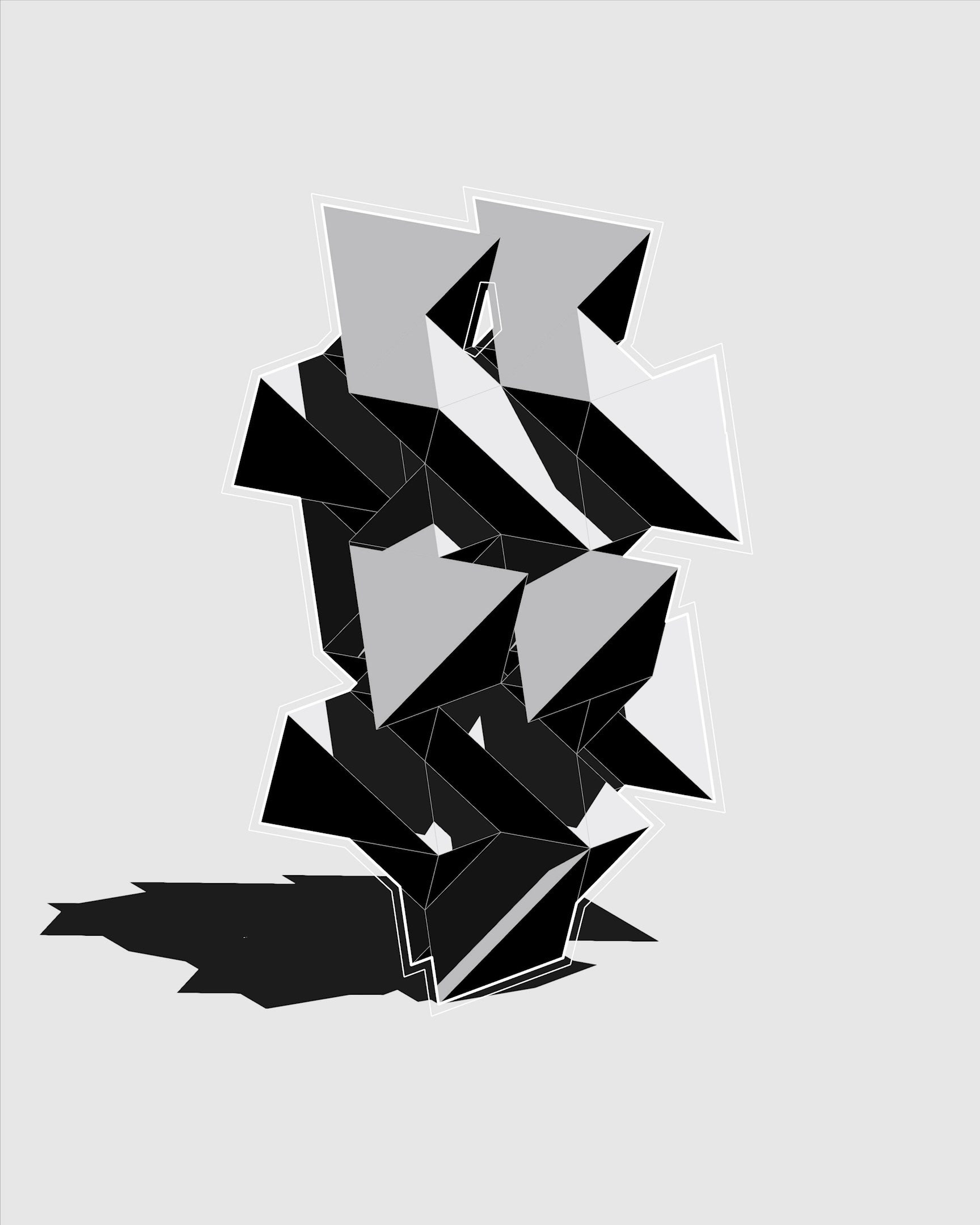
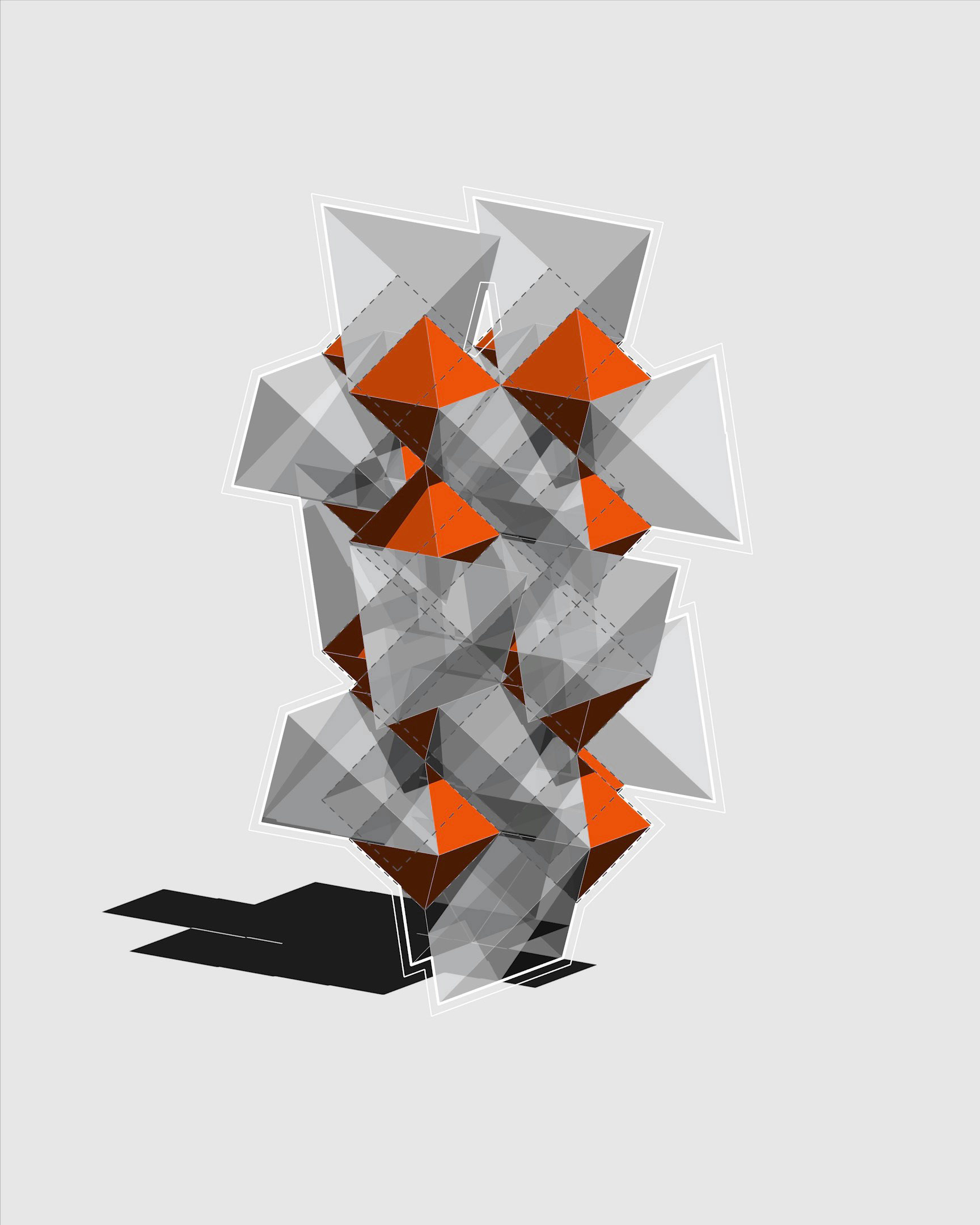
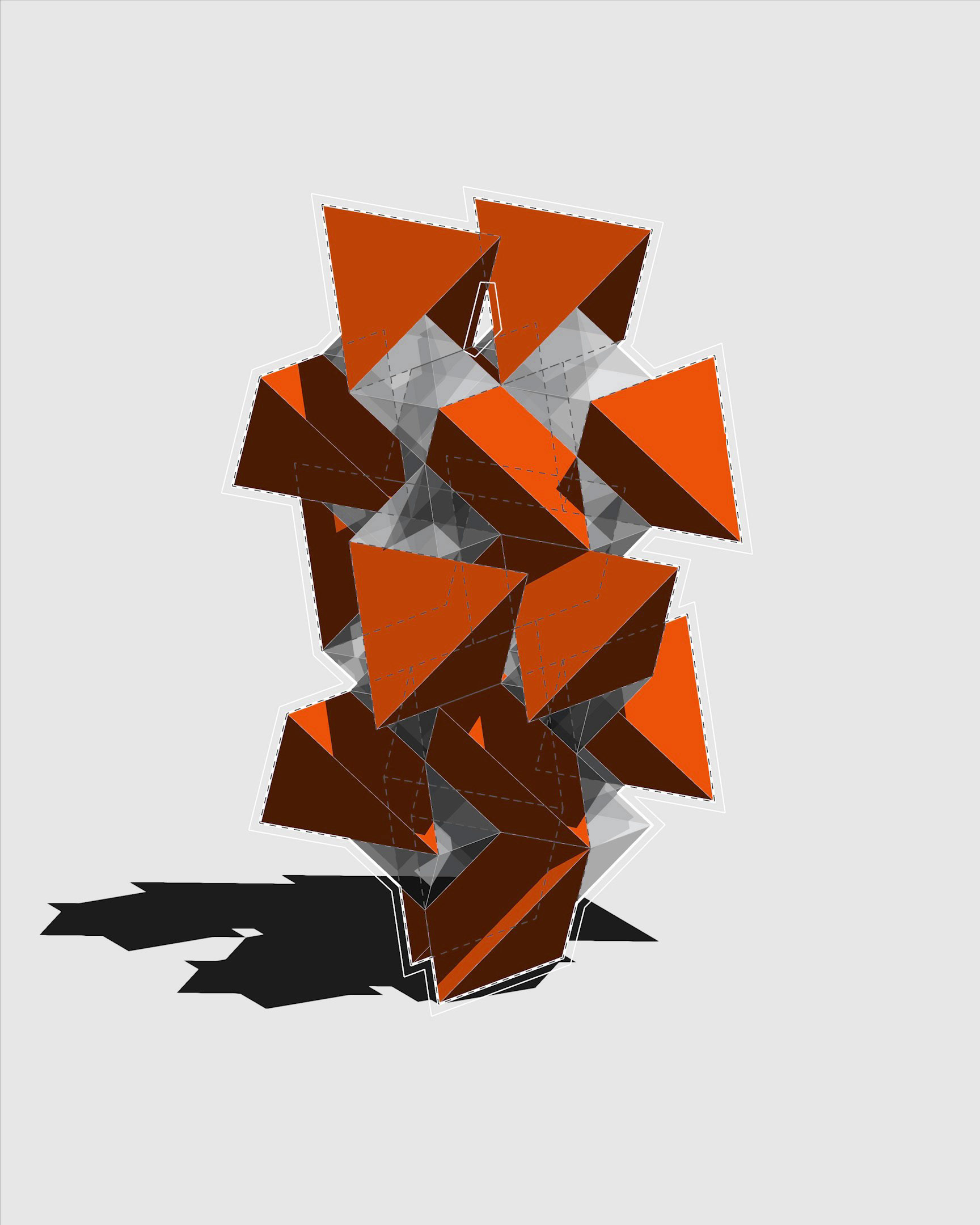
Aiming to extend the original geometry varied the scale and orientation of their relationship, a developed algorithm modifies the fused Polyhedra. By iteratively fitting octahedrons into the tetrahedrons and calculating their area ratios, the utilized geometric principles examine placements and scales with limitless variations.
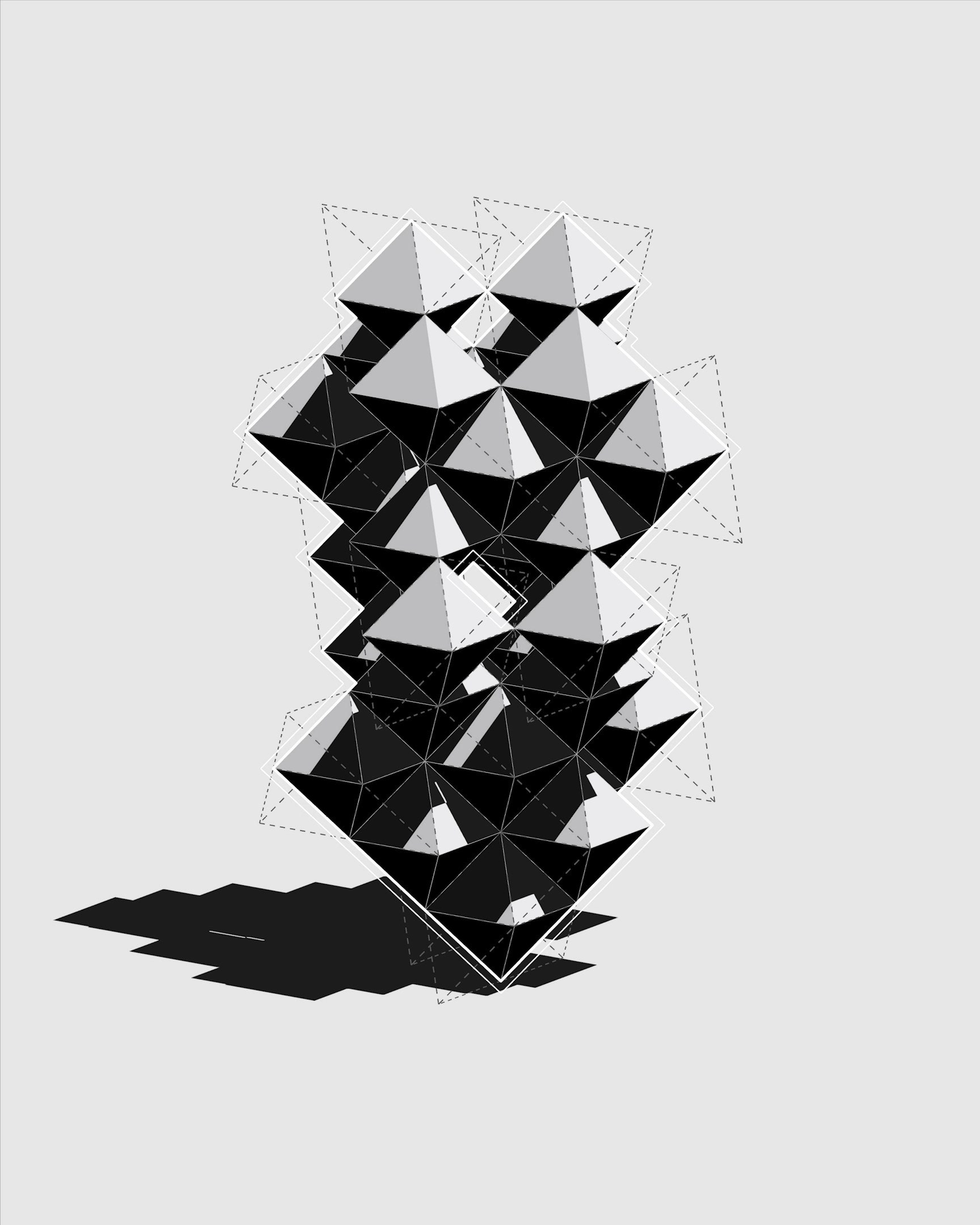
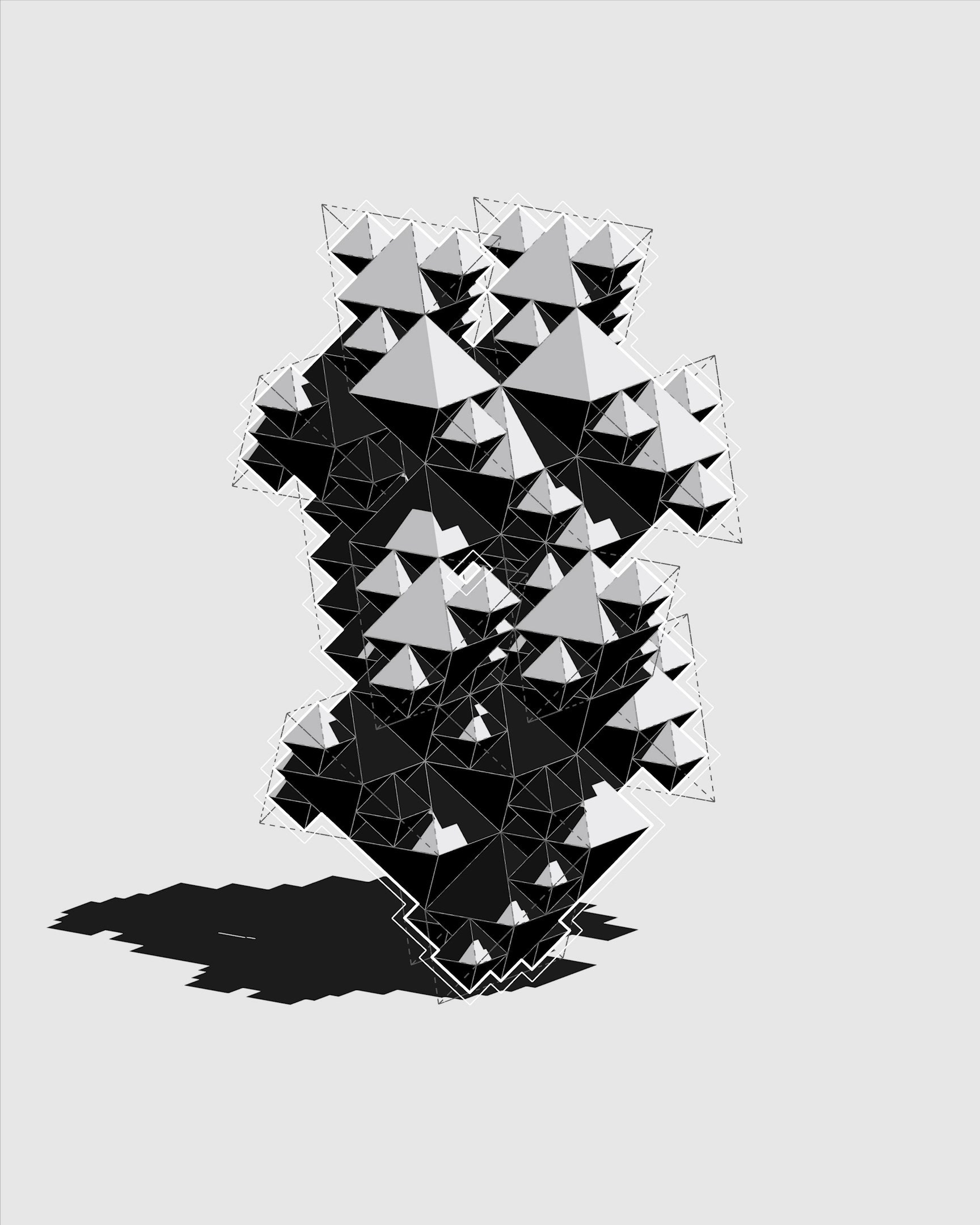
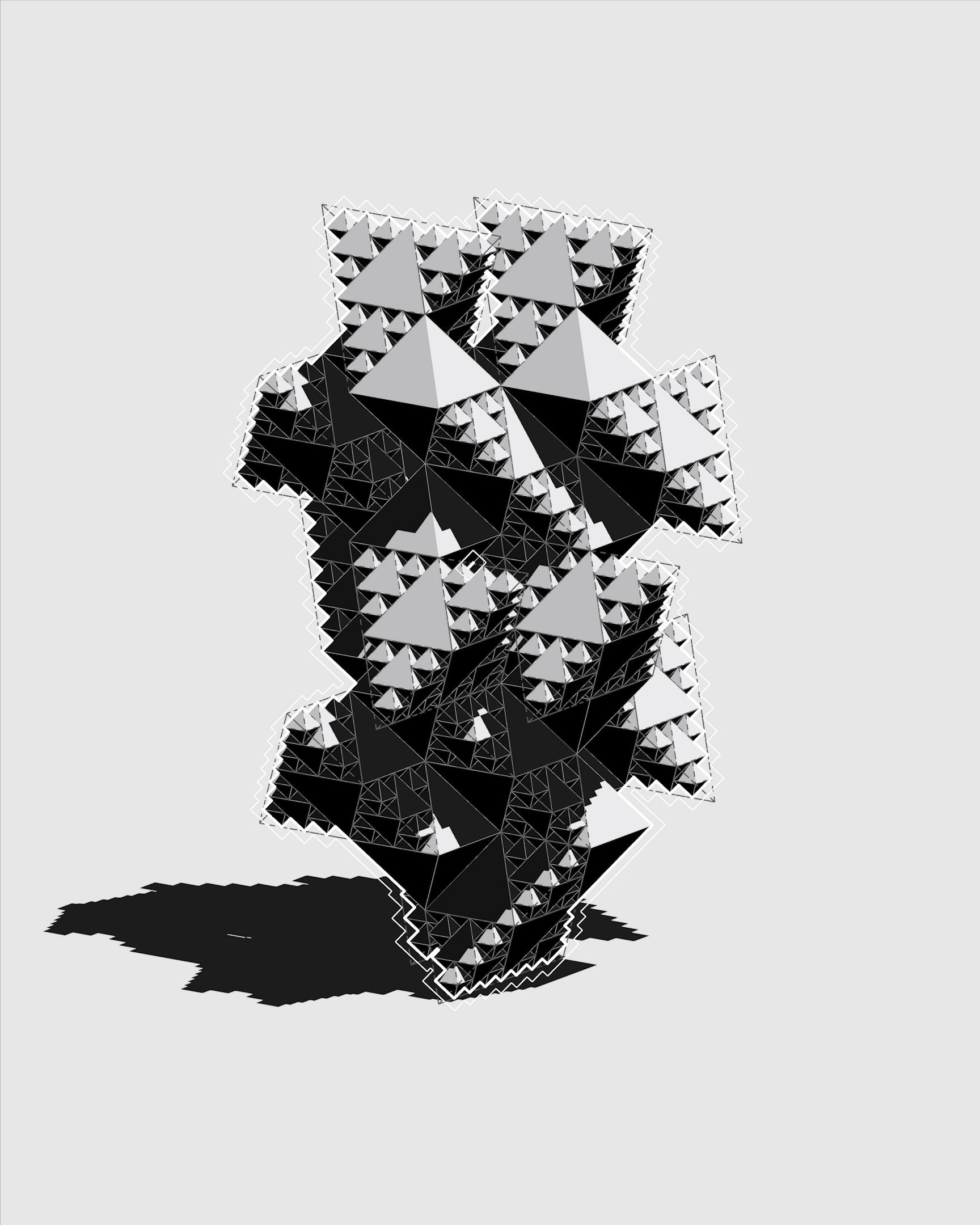

Their unique space-filling properties became central to our exploration, providing a foundation for greater complexity.




While Fredenthal celebrated the purity of singular geometric forms, our work adds complexity by introducing curvature. We generated spheres from the octahedron and used Boolean intersections with the tetrahedrons to create seamless continuity between fused shapes. This transformed the previously static polyhedra into dynamic structures, pushing beyond the limitations of traditional polyhedral form-making.




